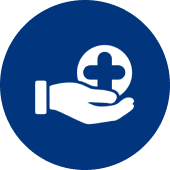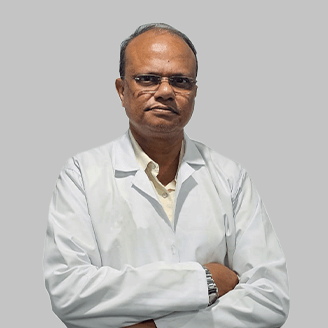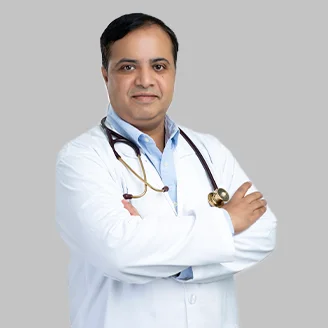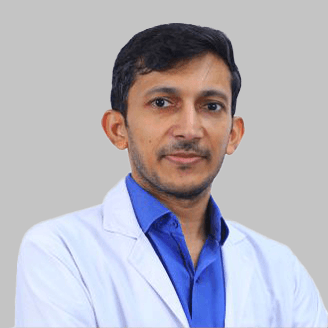-
Doctors
-
Specialities & Treatments
Centre of Excellence
Specialties
Treatments and Procedures
Hospitals & Directions HyderabadCARE Hospitals, Banjara Hills CARE Outpatient Centre, Banjara Hills CARE Hospitals, HITEC City CARE Hospitals, Nampally Gurunanak CARE Hospitals, Musheerabad CARE Hospitals Outpatient Centre, HITEC City CARE Hospitals, Malakpet
HyderabadCARE Hospitals, Banjara Hills CARE Outpatient Centre, Banjara Hills CARE Hospitals, HITEC City CARE Hospitals, Nampally Gurunanak CARE Hospitals, Musheerabad CARE Hospitals Outpatient Centre, HITEC City CARE Hospitals, Malakpet Raipur
Raipur
 Bhubaneswar
Bhubaneswar Visakhapatnam
Visakhapatnam
 Nagpur
Nagpur
 Indore
Indore
 Chh. Sambhajinagar
Chh. SambhajinagarClinics & Medical Centers
Book an AppointmentContact Us
Online Lab Reports
Book an Appointment
Consult Super-Specialist Doctors at CARE Hospitals

Pulmonary Hypertension
Pulmonary Hypertension
Pulmonary Hypertension Treatment in Hyderabad, India
Treat Pulmonary Hypertension At CARE Hospitals in India
Pulmonary hypertension is a condition that leads to excessive or high blood pressure. It can hamper and affect the lungs’ arteries and the heart’s right side. This is also known as pulmonary arterial hypertension (PAH) and is responsible for blocking and constricting the blood arteries.
They can either be damaged, constricted or even collapse. The lung blood flow gets affected and is slowed- rising the pressure in pulmonary arteries and leading to injury. It can add pressure to the heart and weaken its functions. Heart failures are mainly caused due to the added pressure on the cardiac part.
Pulmonary hypertension can progress at a slow rate and be fatal. Many types of therapies at CARE Hospitals can assist to ease the symptoms. We may be able to provide a new quality of life, but remember most of the cases are incurable.
What are the different types of pulmonary hypertension?
The World Health Organization (WHO) classifies pulmonary hypertension into five groups based on its underlying causes.
- Group 1: Pulmonary hypertension due to pulmonary arterial hypertension (PAH). PAH can result from various factors, including underlying diseases and specific medications. It leads to the narrowing, thickening, or stiffening of pulmonary arteries, restricting blood flow and increasing pulmonary artery pressure.
- Group 2: Pulmonary hypertension resulting from left-sided heart disease. When issues affect the left side of the heart responsible for pumping blood to the body, it impacts the right side of the heart and the entire pulmonary circulation. This can lead to blood backup in the heart, elevating pulmonary artery pressure.
- Group 3: Pulmonary hypertension associated with lung disease or hypoxia. Certain lung conditions lead to the constriction of lung arteries, reducing blood flow and raising pulmonary artery pressure.
- Group 4: Pulmonary hypertension due to blockages within the lungs. Blood clots or scar tissue resulting from clots obstruct normal blood flow through the lungs, causing added strain on the right side of the heart and increased pulmonary blood pressure.
- Group 5: Pulmonary hypertension linked to other disorders. PH coexists with various conditions, such as blood disorders and metabolic disorders, and the precise mechanisms triggering PH in these cases are not always well-defined.
Symptoms
There are many indicators or signs that can be seen during the development of pulmonary hypertension. Although they can take up to years to get worse, it’s always suggested to consult a medical professional if the following symptoms sustain-
-
Shortness of breath or dyspnea- this can be initially seen while exercising.
-
Fatigue
-
Dizziness or fainting spells
-
Chest pressure
-
Chest pain
-
Swelling (oedema) in the ankles
-
Oedema in legs
-
Oedema in abdomen (ascites)
-
Bluish colour of lips and skin (cyanosis)
-
Fast pulse
-
Pounding heartbeat (palpitations)
There can be many reasons why you have the above-mentioned symptoms. It is always suggested and recommended to get the annual body check-up done to track down the signs and symptoms.
Nowadays many people opt for home medical diagnostic tools- like a blood pressure machine. These machines can tell the blood pressure as well as the pulse rate. Maintain a physical examination daily if you have a tendency towards high or low blood pressure.
Risks
People who are in the age group of 30-60 are more prone to pulmonary hypertension than those who are above 60. It is mainly due to the working class stress that conditions like pulmonary hypertension occur.
Medically, growing older can catalyze pulmonary arterial hypertension development. Younger people are also experiencing idiopathic PAH.
There can be added risks to pulmonary hypertension development-
-
Family history or genetic reasons
-
Being overweight
-
Blood-clotting disorders
-
Genetic history for blood clots in the lungs
-
Exposure to asbestos
-
Congenital heart disease
-
Living at a high altitude
-
Consumption of weight-loss medicines
-
Consumption of illegal drugs like cocaine
-
Consumption of selective serotonin reuptake inhibitors (SSRIs) to cure depression and anxiety.
Diagnosis
-
Physical and medical tests cannot diagnose the developmental stage of pulmonary hypertension.
-
It is only detected when it’s at the advanced stage but still the signs and symptoms are similar to other lungs and heart conditions.
-
Doctors at CARE Hospitals will run a physical examination and review to analyse all the signs. You're required to provide your family and medical history.
-
The tests are mainly blood and imaging tests that can diagnose pulmonary hypertension.
-
Blood tests- these can detect the complications and other causes of pulmonary hypertension.
-
X-rays of the chest- doctors will get the picture of the heart, lungs and chest to show any enlargement of the pulmonary arteries and right ventricle.
-
ECG scan or the electrocardiogram- The heart’s electrical patterns and abnormal heartbeats can be detected with the help of an ECG test. It is non-invasive and reveals the signs of enlargements in the right ventricle or strain.
-
Echocardiogram- the moving images of the heart are examined with the help of sound waves- it helps the doctors to know the status of valves and heart functions. The pressure and thickness of the right ventricle can be examined. These tests can also be conducted while doing workouts like on a treadmill or a stationary bike. A mask can also be used to determine the heart and lungs function.
-
Right heart catheterisation- This is a confirmation diagnosis test after an echocardiogram where a catheter is installed into a vein. The catheter is a thin, flexible tube inserted by the groin. It will be guided to the right ventricle and pulmonary arteries for analysis.
-
After getting diagnosed with pulmonary hypertension, other confirmatory tests are conducted to know the organ’s positions.
-
Computerised tomography- it is an imaging test to know the status inside and show the blockages.
-
MRI scans are done to know the blood flow inside the pulmonary arteries and the working of the right ventricle.
-
A lung function test is conducted to know the airflow inside and lung capacity.
-
Sleep is studied to measure brain activity, heart rate, BP, oxygen level, etc.
-
V/Q scan involves a tracer that can track blood flow and airflow.
-
An open lung biopsy can also be conducted to check the cause of pulmonary hypertension.
-
The doctors may conduct genetic testing for confirmation.
Treatment
The treatment of pulmonary hypertension (PH) is highly individualized, dependent on the specific type of PH and your underlying health conditions. Your healthcare team will tailor the treatment to your unique needs.
Currently, direct treatment is available for two types of PH:
- Pulmonary Artery Hypertension (PAH).
- Chronic Thromboembolic Pulmonary Hypertension (CTEPH).
For PAH, treatment options include:
- Calcium Channel Blockers: Medications that can reduce blood pressure in the pulmonary arteries and the body.
- Diuretics: "Water pills" to help eliminate excess fluid.
- Oxygen Therapy: If your blood lacks sufficient oxygen.
- Pulmonary Vasodilators: Medications that relax pulmonary arteries, enhancing blood flow and reducing cardiac strain.
CTEPH treatment comprises:
- Anticoagulants: Medications to prevent blood clots.
- Balloon Atrial Septostomy (BAS): A procedure used to stabilize individuals with pulmonary hypertension while awaiting a lung transplant.
- Balloon Pulmonary Angioplasty (BPA): A catheter-based procedure using a balloon to expand the pulmonary artery, especially when open surgery isn't possible.
- Medication: The use of a soluble guanylate cyclase stimulator (SGCS) to slow disease progression.
- Pulmonary Endarterectomy (PEA): Surgery to remove lung blood clots, offering a potential cure for CTEPH patients.
For PH linked to heart or lung issues, treatment centers on addressing the underlying conditions, which can vary greatly from person to person. It may include dietary and lifestyle changes, medication for managing problems like hypertension or heart failure, oxygen therapy, and potentially surgical procedures such as heart valve repair.
Treatment options for PH associated with other medical conditions (WHO Group 5) are continually evolving, with your provider working closely with you to determine the most suitable care plan.
In severe cases of pulmonary hypertension, a lung transplant may be a last-resort option.
Medications
Many medications are provided that can improve conditions like pulmonary hypertension. The signs and symptoms can slow down with the help of-
-
Vasodilators- These are blood vessel dilators that can relax and open blood vessels. It promotes blood flow and is prescribed in the form of epoprostenol.
-
GSC Stimulators- This increases the nitric oxide that further relaxes pulmonary arteries and pressure in the lungs.
-
Endothelin receptor antagonists- These will induce endothelin that can narrow walls of blood vessels. Example- Bosentan, macitentan, and ambrisentan.
-
High-dose calcium- These are called channel blockers and will relax the wall of blood vessels and muscles.
-
Warfarin- It is an anticoagulant and helps to prevent blood clots in the pulmonary arteries.
-
Digoxin- help the heart to beat fast and pump more blood.
-
Diuretics- helps kidneys to remove excess fluid and are known as water pills; reducing the load on the heart.
-
Oxygen therapies
Surgeries
-
Atrial septostomy- it is an open-heart surgery done when the medications aren’t working- the surgeon will create an opening between the upper left and right chamber of the heart. This is done to relieve pressure on the heart.
-
Lung or heart-lung transplant- if someone has idiopathic pulmonary hypertension, they may undergo a transplant.
One should consult the doctor about all the side effects post the surgical procedure before getting the treatment.
Prevention
Preventing pulmonary hypertension is not always entirely within your control, as certain risk factors are beyond your influence. If you possess these risk factors, your healthcare provider might recommend regular screenings to assess the health of your heart and lungs.
However, there are proactive steps you can take to minimize your risk of pulmonary hypertension:
- Establish an Exercise Routine: Consult your healthcare provider to determine which exercises are safe for you and create a suitable exercise plan.
- Adopt a Heart-Healthy Diet: Lower your risk by avoiding processed foods, fast food, and items high in salt and saturated fats.
- Quit Smoking and Tobacco Use: Smoking and tobacco use are leading risk factors for heart and lung issues. Although quitting can be challenging, especially for long-term users, your provider can offer resources, and support groups can be beneficial.
- Adhere to Medication Regimens: Take prescribed medications for blood pressure and other conditions as directed by your healthcare provider.
Why choose CARE Hospitals?
CARE Hospitals in India are known for the best treatments across the country with world-class technologies and assistance from top medical professionals. We aim to provide the best diagnostic and treatment aids to our patients. Our comprehensive team of experts will guide you through every procedure followed. We hope to bring the best out of the condition.
Our Doctors
-

Dr. A Jayachandra
MBBS, DTCD, FCCP Special training in Med. Thoracoscopy Marseilles France
Pulmonology
View More -

Dr. Anirban Deb
MBBS, MD (TB & Respiratory Diseases)
Pulmonology
View More -

Dr. Damodar Bindhani
MBBS, MD (Chest & Respiratory Diseases)
Critical Care Medicine, Pulmonology
View More -

Dr. Diti V Gandhasiri
MBBS, MD, DNB (Respiratory Medicine)
Pulmonology
View More -

Dr. Faizan Aziz
Mbbs, MD Pulmonology, FIIP[ Fellowship In Interventional Pulmonology, Italy, Europe ]
Pulmonology
View More -

Dr. G. Anil Kumar
MBBS, DNB (Pulmonary Medicine)
Pulmonology
View More -

Dr. Girish Kumar Agrawal
DNB (Respiratory Disease), IDCCM, EDRM
Pulmonology
View More -

Dr. K Sailaja
MBBS, MD
Pulmonology
View More -

Dr. Ketan Malu
MBBS, DNB (Respiratory Medicine), EDARM (Europe), Fellowship in Respiratory Medicine (UK)
Pulmonology
View More -

Dr. MD. Abdullah Saleem
iMBBS, MD, FCCP (USA)
Pulmonology
View More -

Dr. Mohammed Mukarram Ali
MBBS, DTCD, FCCP
Pulmonology
View More -

Dr. Nitin Chitte
MBBS, DNB (Pulmonary Medicine), EDARM (Europe)
Pulmonology
View More -

Dr. Sandeep Raj Bharma
MBBS, MD (Pulmonary Medicine), Fellowship (Pulmonary Medicine), Fellowship(sleep medicine)
Pulmonology
View More -

Dr. Sanjib Mallick
MBBS, MD Pulmonary Medicine
Pulmonology
View More -

Dr. Sathish C Reddy S
MBBS, MD, DM (Pulmonary Medicine)
Pulmonology
View More -

Dr. Sudheer Nadimpalli
MD (Resp. Med), MRCP (UK), FRCP (Edinburgh)
Pulmonology
View More -

Dr. Suhas P. Tiple
MBBS, TDD, DNB (Respiratory Diseases), CTCCM (ICU Fellowship), CCEBDM
Pulmonology
View More -

Dr. Sushil Jain
MBBS, DTCD, DNB
Pulmonology
View More -

Dr. Syed Abdul Aleem
MBBS, DTCD, DNB (RESP. Diseases),MRCP (UK) (RESP. MED.)
Pulmonology
View More -

Dr. T L N Swamy
MBBS, MD (Respiratory Diseases)
Pulmonology
View More -

Dr. V N B Raju
MBBS, MD
Pulmonology
View More
Frequently Asked Questions
Still Have a Question?

